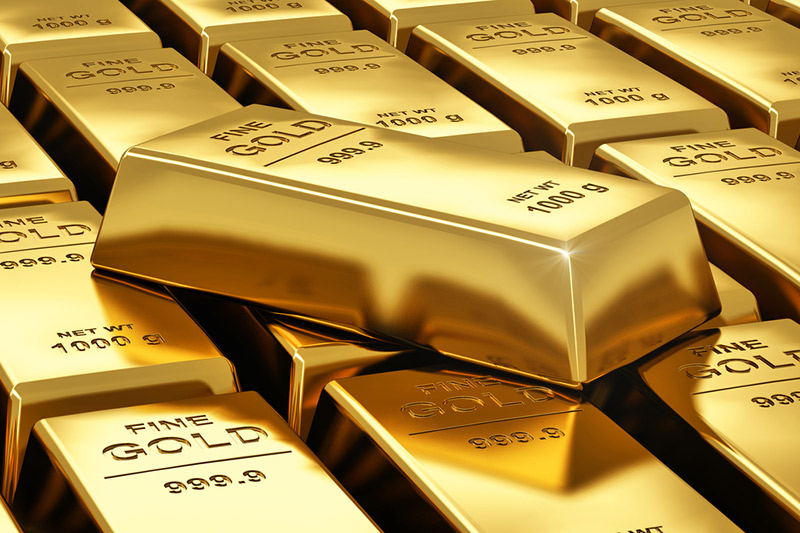Investing.com - Gold futures rose sharply on Monday, climbing above the psychologically important USD1,700-an-ounce-level as the U.S. dollar weakened amid signs of progress in handling the euro zone’s debt crisis.
On the Comex division of the New York Mercantile Exchange, gold futures for February delivery traded at USD1,717.25 a troy ounce during early European trade, surging 1.7%.
It earlier rose by as much as 1.85% to trade at USD1,719.15 a troy ounce, the highest since November 21.
German media outlets reported over the weekend that German Chancellor Angela Merkel and French President Nicolas Sarkozy were studying legal changes to the European Union treaty, which would include deeper financial integration among EU members.
The pact, if agreed, would also give the European Central Bank more scope to undertake large scale bond purchases.
The news boosted appetite for riskier assets, such as stocks and commodities and prompted investors to shun the U.S. dollar. The dollar index, which tracks the performance of the greenback versus a basket of six other major currencies, was down 0.62% to trade at 79.33.
Dollar weakness usually benefits gold, as it boosts the metal's appeal as an alternative asset and makes dollar-priced commodities cheaper for holders of other currencies.
Gold futures held on to gains after a spokesman for the International Monetary Fund dismissed speculation that the lending organization was preparing a EUR600 bailout package for Italy.
In recent sessions, gold has tended to move in line with stocks and other commodities, losing some of its appeal as a safe haven asset as investors prefer to turn to the relative safety of the U.S. dollar.
French lender Credit Agricole said in a report earlier that, “Gold prices could still gap in either direction depending upon events in the euro zone and the fortunes of the U.S. dollar, which remains the safe haven of choice amid a flight to safety, quality and liquidity.”
Elsewhere on the Comex, silver for March delivery rallied 2.95% to trade at USD32.01 a troy ounce, while copper for March delivery surged 3% to trade at USD3.382 a pound.
On the Comex division of the New York Mercantile Exchange, gold futures for February delivery traded at USD1,717.25 a troy ounce during early European trade, surging 1.7%.
It earlier rose by as much as 1.85% to trade at USD1,719.15 a troy ounce, the highest since November 21.
German media outlets reported over the weekend that German Chancellor Angela Merkel and French President Nicolas Sarkozy were studying legal changes to the European Union treaty, which would include deeper financial integration among EU members.
The pact, if agreed, would also give the European Central Bank more scope to undertake large scale bond purchases.
The news boosted appetite for riskier assets, such as stocks and commodities and prompted investors to shun the U.S. dollar. The dollar index, which tracks the performance of the greenback versus a basket of six other major currencies, was down 0.62% to trade at 79.33.
Dollar weakness usually benefits gold, as it boosts the metal's appeal as an alternative asset and makes dollar-priced commodities cheaper for holders of other currencies.
Gold futures held on to gains after a spokesman for the International Monetary Fund dismissed speculation that the lending organization was preparing a EUR600 bailout package for Italy.
In recent sessions, gold has tended to move in line with stocks and other commodities, losing some of its appeal as a safe haven asset as investors prefer to turn to the relative safety of the U.S. dollar.
French lender Credit Agricole said in a report earlier that, “Gold prices could still gap in either direction depending upon events in the euro zone and the fortunes of the U.S. dollar, which remains the safe haven of choice amid a flight to safety, quality and liquidity.”
Elsewhere on the Comex, silver for March delivery rallied 2.95% to trade at USD32.01 a troy ounce, while copper for March delivery surged 3% to trade at USD3.382 a pound.
